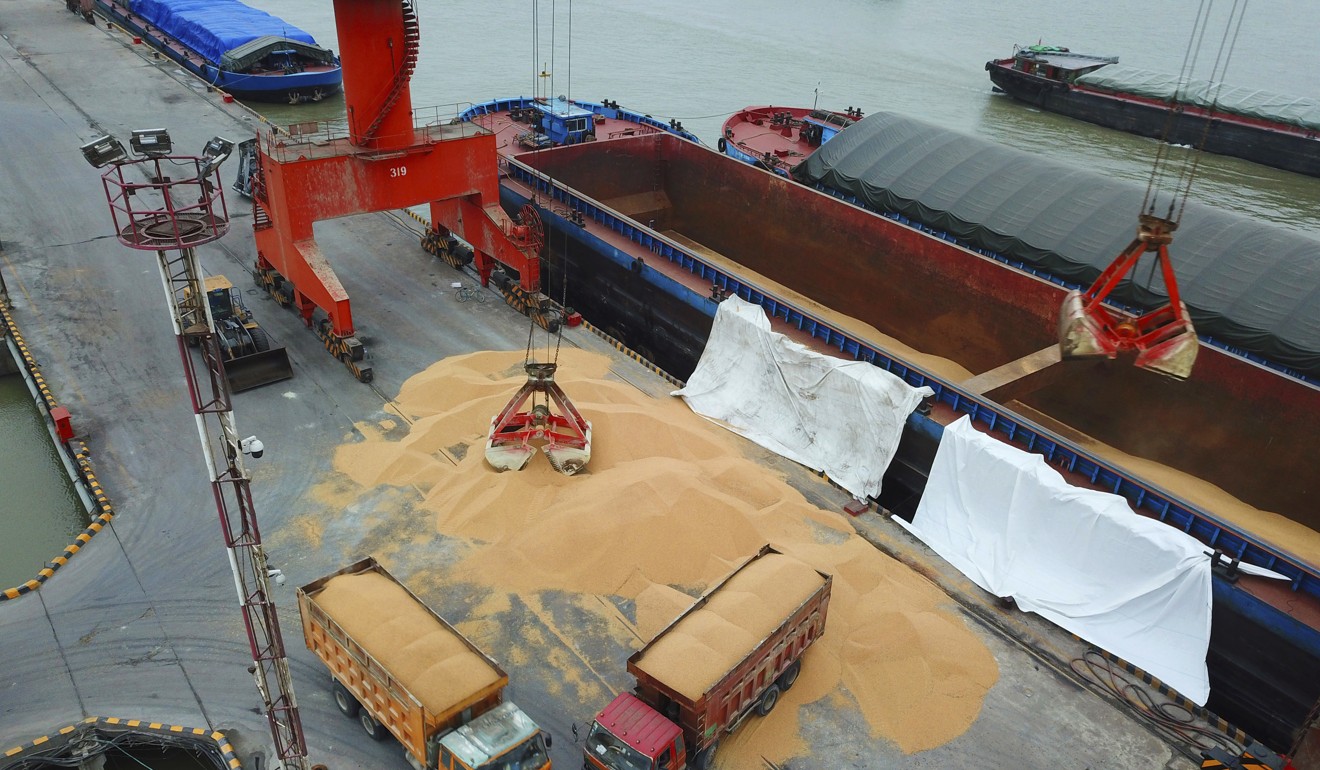
Meet the Chinese farmers delighted by the prospect of a US trade war
Threat of import tariffs on US-produced soybeans likely to prove a boon to Chinese producers
When farmer Liu Cong first started planting soybeans in northeastern China’s Heilongjiang province, he lamented how low prices were, thanks largely to competition from American exports.
“US soybeans assaulted the Chinese market,” said Liu, who was visiting a soybean industry exhibition this week in Shanghai. “They were like wolves coming.”
China is the largest buyer of American soybeans in the world, accounting for almost 60 per cent of US soy exports worth US$12.4 billion in revenue for the year ended on August 31.
Liu and other Chinese soy growers are cheering a proposed 25 per cent Chinese tariff on American soybeans announced last week, relishing the prospect of potential new business while farmers from Iowa to Indiana fret over losing their biggest overseas customer.
The tariffs are part of a trade dispute that escalated last week when the administration of President Donald Trump announced plans to impose tariffs on US$50 billion in Chinese imports. China lashed back within hours, matching the American tariffs with plans to tax US$50 billion of US products, targeting products they can get elsewhere like soybeans and small aircraft.
If enacted, the tariffs could raise food prices for Chinese consumers, as American soy is used to make cooking oil and animal feed. Still, tofu producers, soy milk makers and soybean importers at a trade exhibition in Shanghai expressed little concern about the potential tariffs.
“The cost of soybeans in the making of our products isn’t actually all that big,” said Wu Yuefang, vice-president of the Bean Products Committee of China.
“When the price of soybeans goes up, farmers are more willing to plant them. This problem is actually an opportunity.”
China has already been looking for alternative soy sources in places such as Brazil, Canada and Russia, and the tariffs could help reduce Chinese dependence on US suppliers, says Beijing-based trade analyst Erlend Ek.
“The discussion at the moment in China is a confident one. They think they can weather out the effects of these extra tariffs. Tariffs aren’t stopping imports, it’s just making it more expensive,” Ek said. “They’re willing to bite that pill.”
On the US side, the tariffs will hurt, industry experts say.
American farmers could lose up to 70 per cent of their Chinese export volume and a large chunk of their future business, said North Asia director of the US Soybean Export Council, Paul Burke.
There is only so much slack that other big importers like Japan can take up.

Beijing has long warned that US-grown soybeans would be a target if a trade war erupted with Washington. Chinese officials told Burke in September they were likely to impose tariffs on soybeans if trade tensions started to escalate.
“The Chinese government has done a more thorough analysis of the impact than the US government has,” Burke said. “The individual US soybean farmer will notice the pain more than any other participant in the supply chain.”
The potential soybean tariffs strikes at the heart of Trump’s political base as soy production is concentrated in the rural Midwest.
Illinois, Iowa, Minnesota, Nebraska, Indiana and Missouri account for over half of all soy produced in the United States. Trump won 89 per cent of America’s counties that produce soy, according to an Associated Press analysis of Agriculture Department and election data.
The soybean tariff is part of a carefully targeted strategy by Chinese President Xi Jinping to strike at the heart of Trump’s base, Ek says, while minimising risks to the Chinese economy.
“This trade war is making our prospects really bright this year,” said Liu, the farmer. “Everyone back home has high hopes for 2018.”

